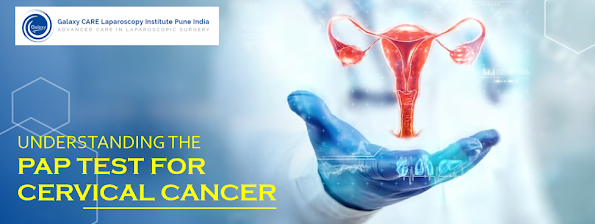UNDERSTANDING THE PAP TEST FOR CERVICAL CANCER
Introduction: Cervical cancer is a significant health concern that affects women globally. However, with advancements in medical science, early detection and prevention have become powerful tools in the fight against this disease. One such crucial diagnostic tool is the Pap test, a simple yet effective screening method that can make a substantial difference in women's health. In this blog post, we'll delve into the importance of the Pap test, how it works, and why it is an integral part of routine healthcare for women.
Body:
1. The Basics of Cervical Cancer:
- Provide a brief overview of cervical cancer, its causes, and its prevalence.
- Emphasize the importance of early detection in improving survival rates.
2. What is a Pap Test?
- Explain what a Pap test (Papanicolaou test) is and why it is named after its inventor, Dr. George Papanicolaou.
- Highlight that the test is primarily a screening tool designed to detect abnormal cells in the cervix before they become cancerous.
3. Who Should Get a Pap Test?
- Outline the recommended age for starting Pap tests and the frequency of screening.
- Discuss any special considerations, such as those for women with a family history of cervical cancer or certain risk factors.
4. The Procedure:
- Walk through the steps of a typical Pap test, explaining that it involves collecting a small sample of cells from the cervix.
- Assure readers that the procedure is generally quick, straightforward, and relatively painless.
5. Interpreting Pap Test Results:
- Explain the different possible results, including normal, abnormal, and inconclusive.
- Emphasize that an abnormal result doesn't necessarily mean cancer but may require further testing.
6. Importance of Regular Pap Testing:
- Stress the significance of regular Pap tests in preventing cervical cancer and catching abnormalities early.
- Discuss how early detection can lead to simpler and more effective treatment options.
7. Advances in Screening Techniques:
- Briefly touch upon any recent advancements in cervical cancer screening, such as HPV testing in conjunction with Pap tests.
8. Addressing Common Concerns:
- Address common fears or misconceptions about Pap tests, such as discomfort, embarrassment, or anxiety.
9. Empowering Women through Knowledge:
- Encourage women to be proactive about their health by scheduling regular Pap tests.
- Provide resources and information about where and how women can access this vital screening.
Conclusion: In conclusion, the Pap test stands as a stalwart defender in the battle against cervical cancer. By understanding its importance, demystifying the procedure, and actively participating in routine screenings, women can take a proactive role in safeguarding their health. Early detection through Pap tests not only saves lives but also empowers women to make informed decisions about their well-being. Make the Pap test a priority in your healthcare journey – it's a small step that can lead to significant benefits.




Comments
Post a Comment